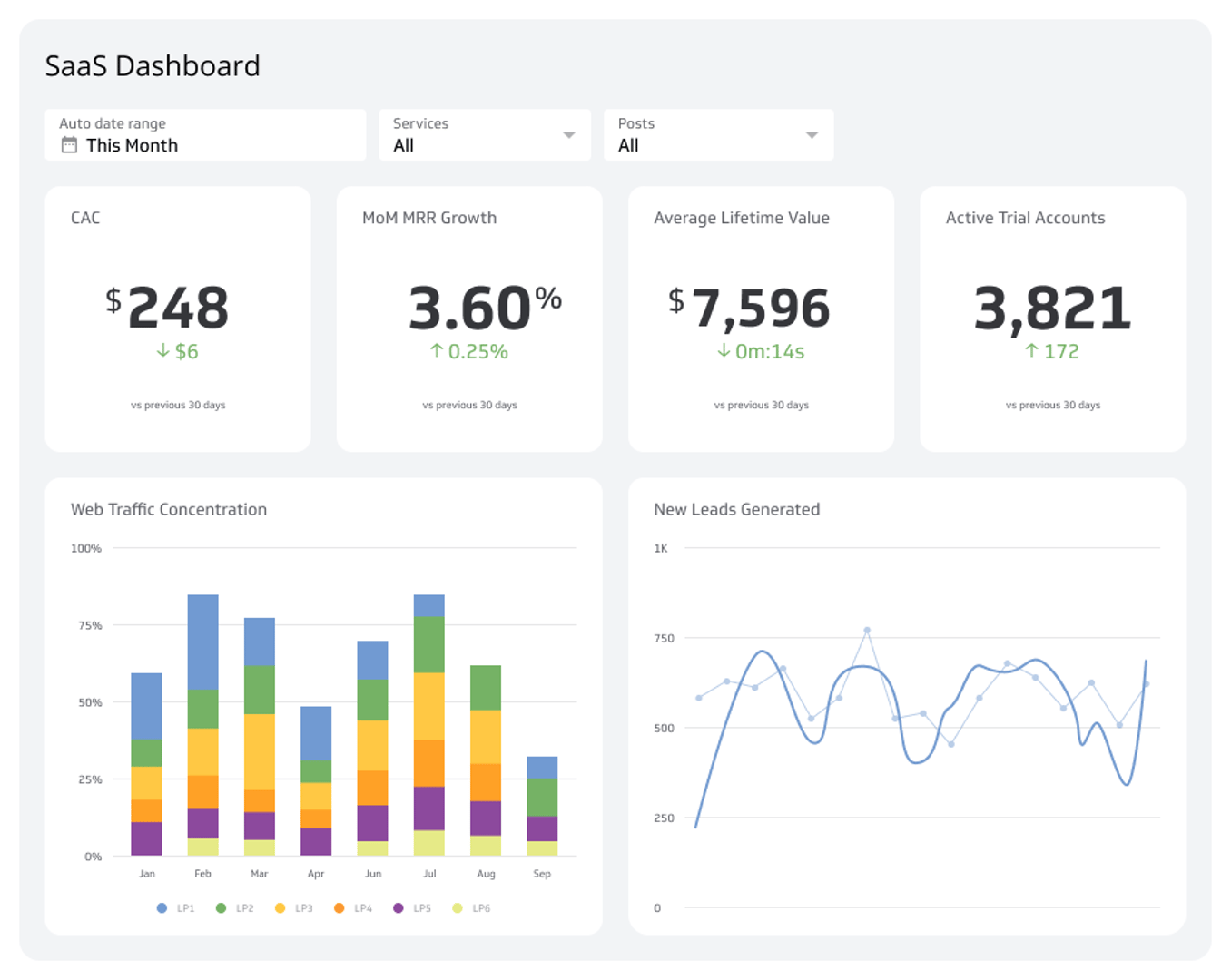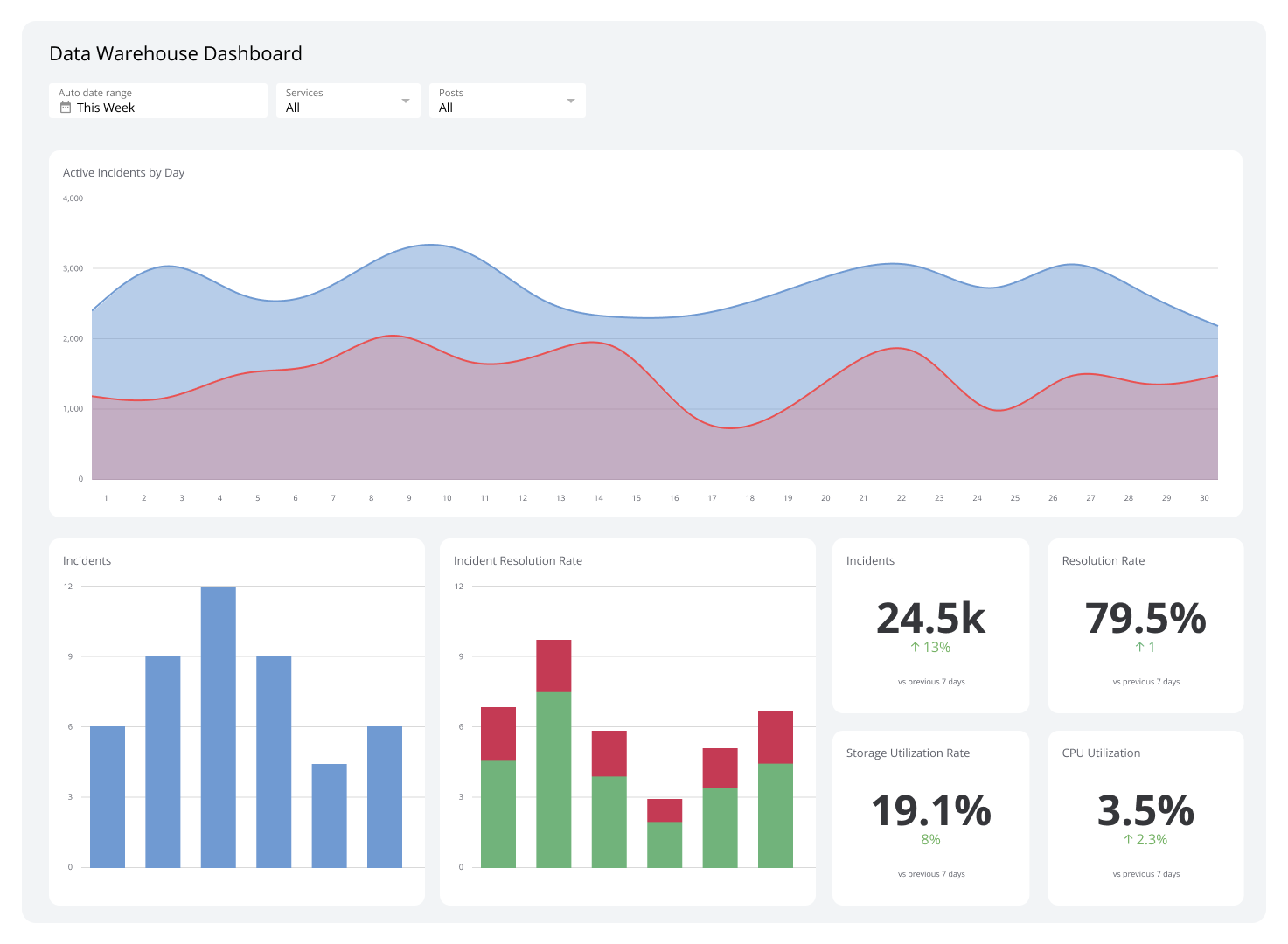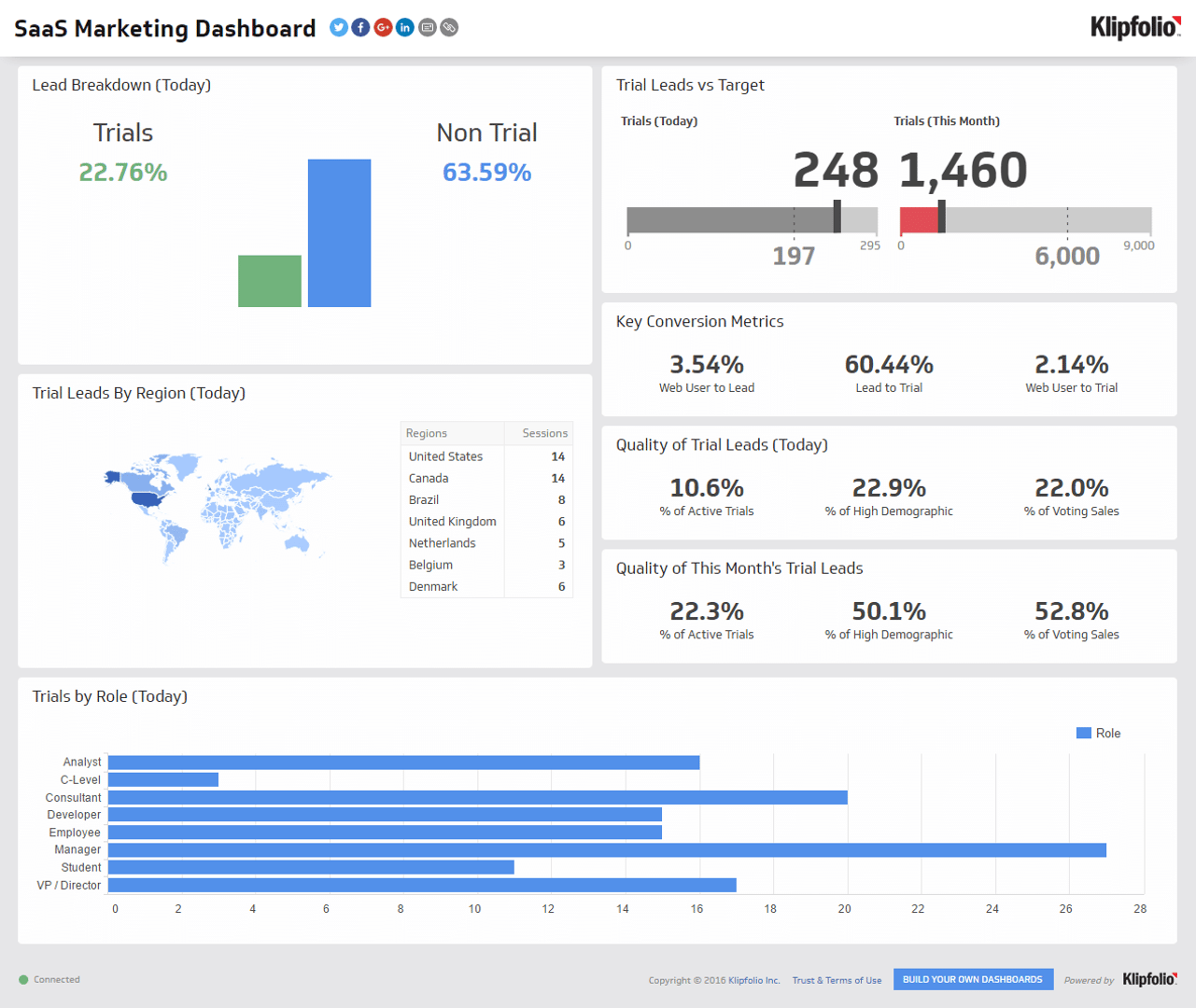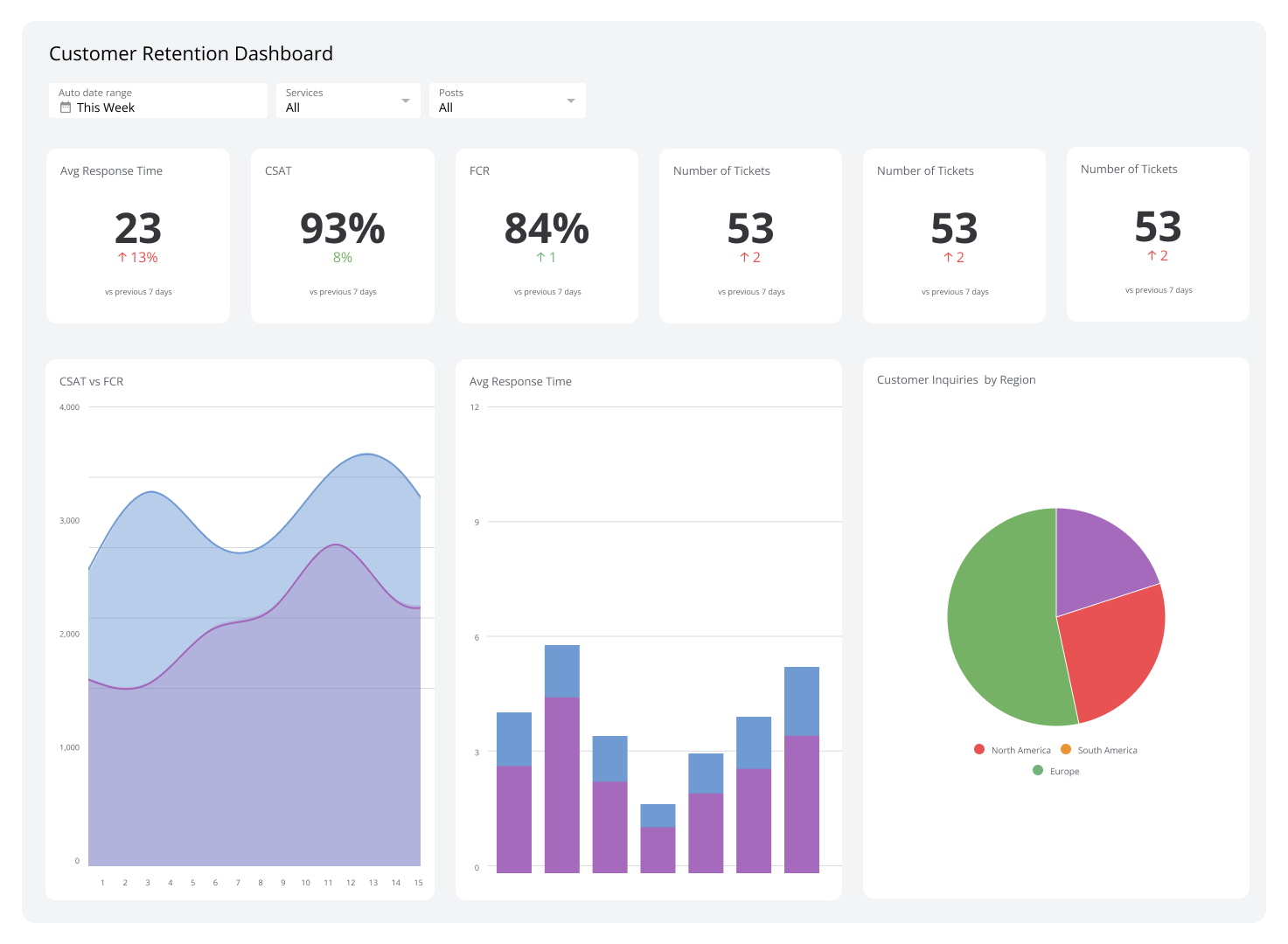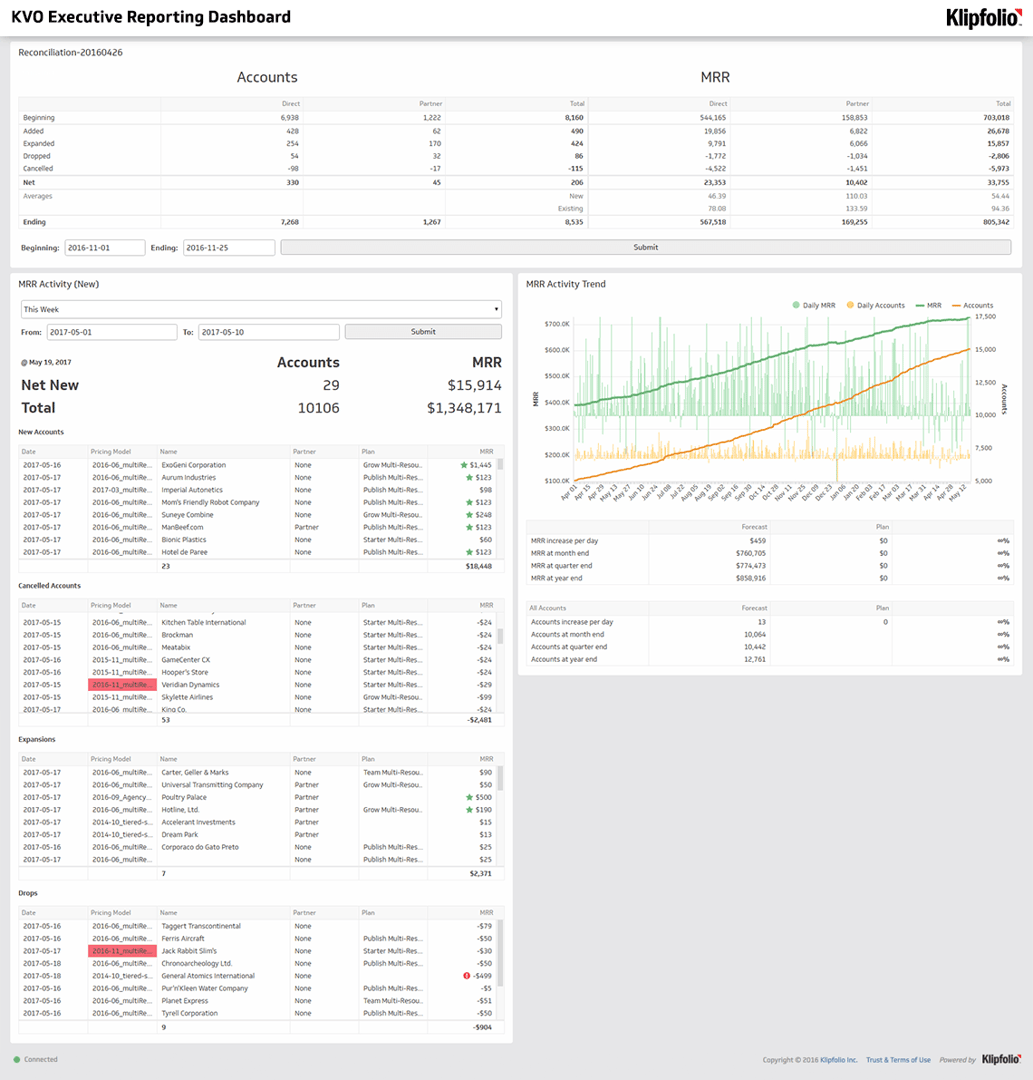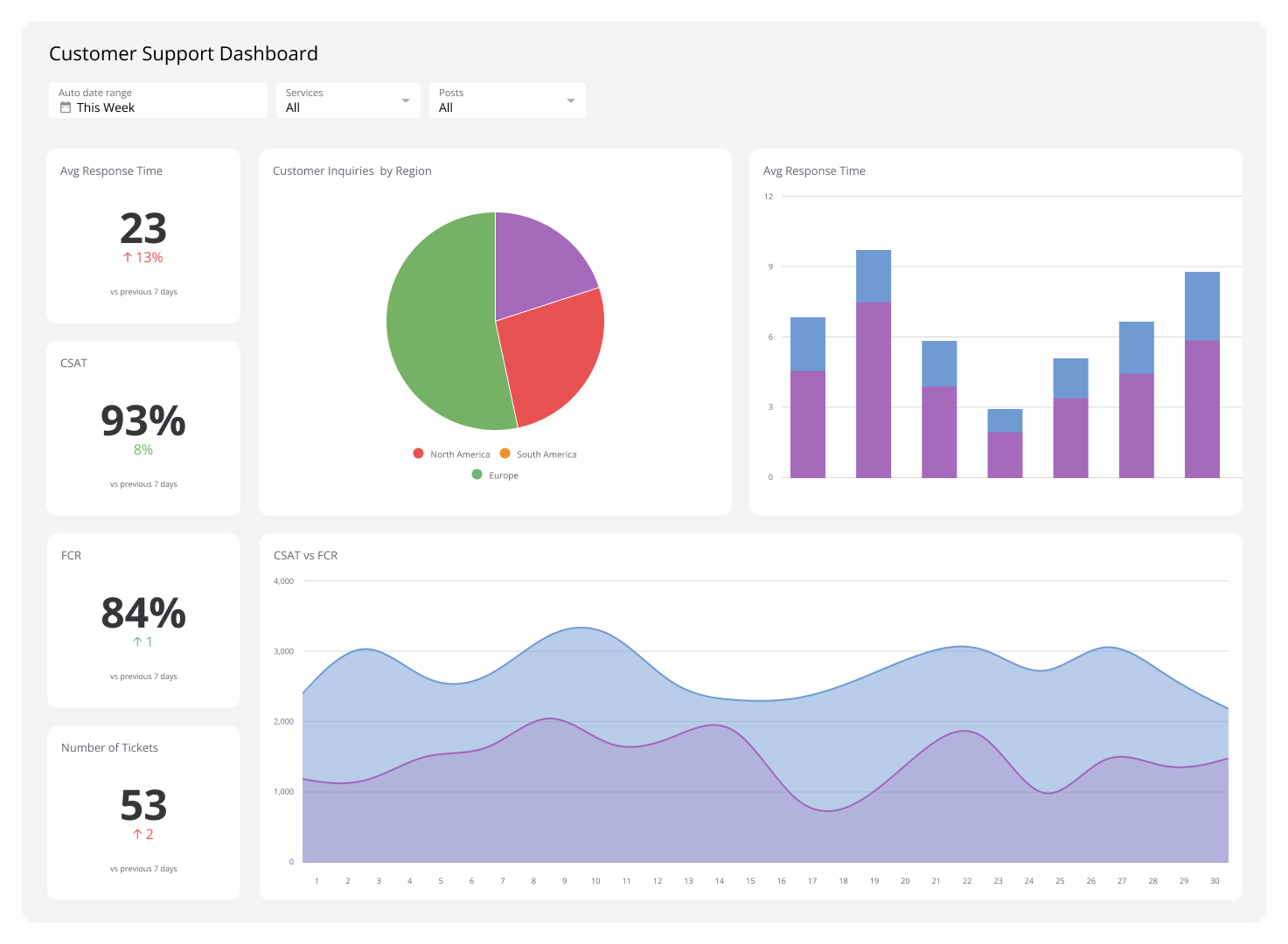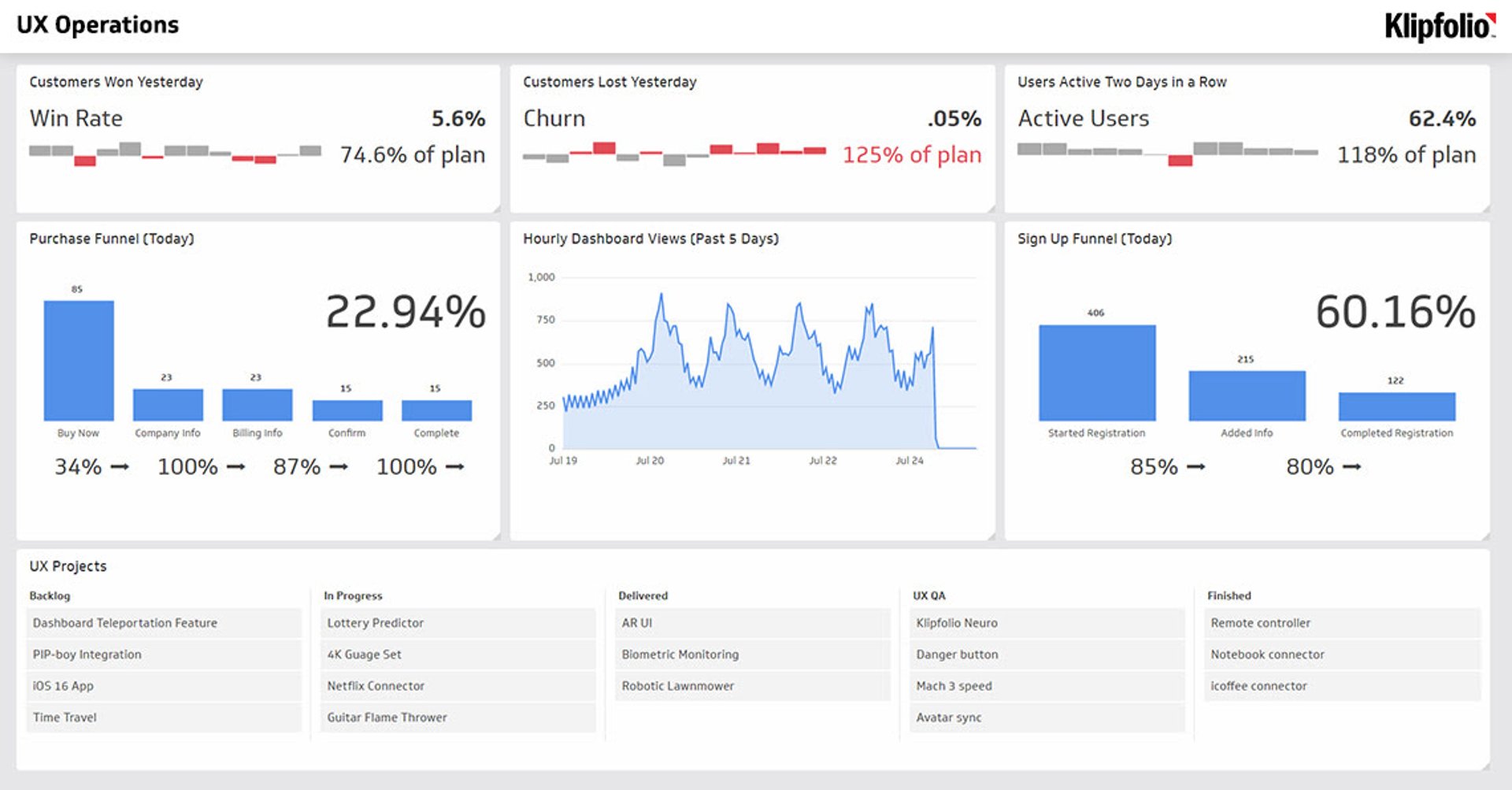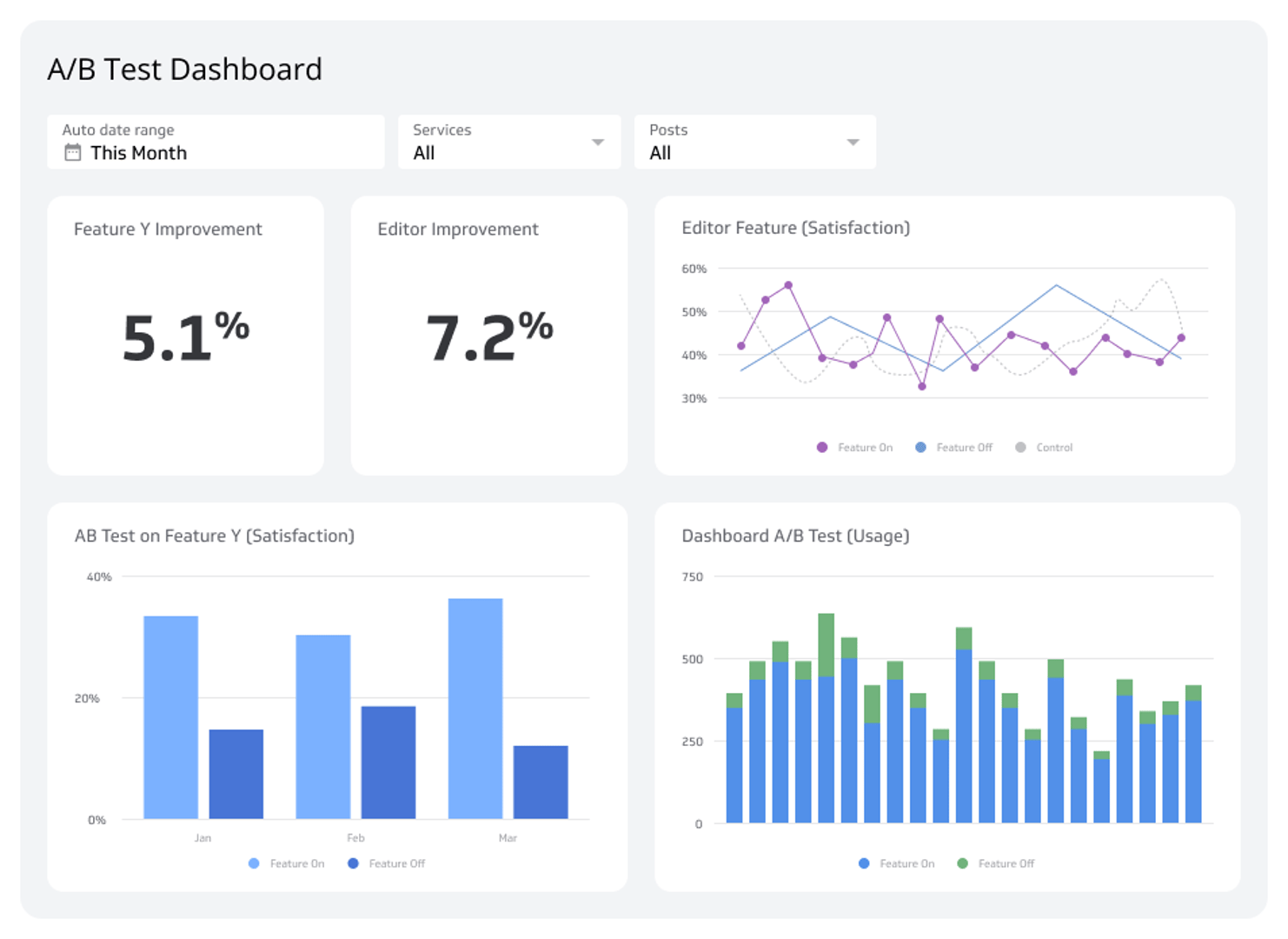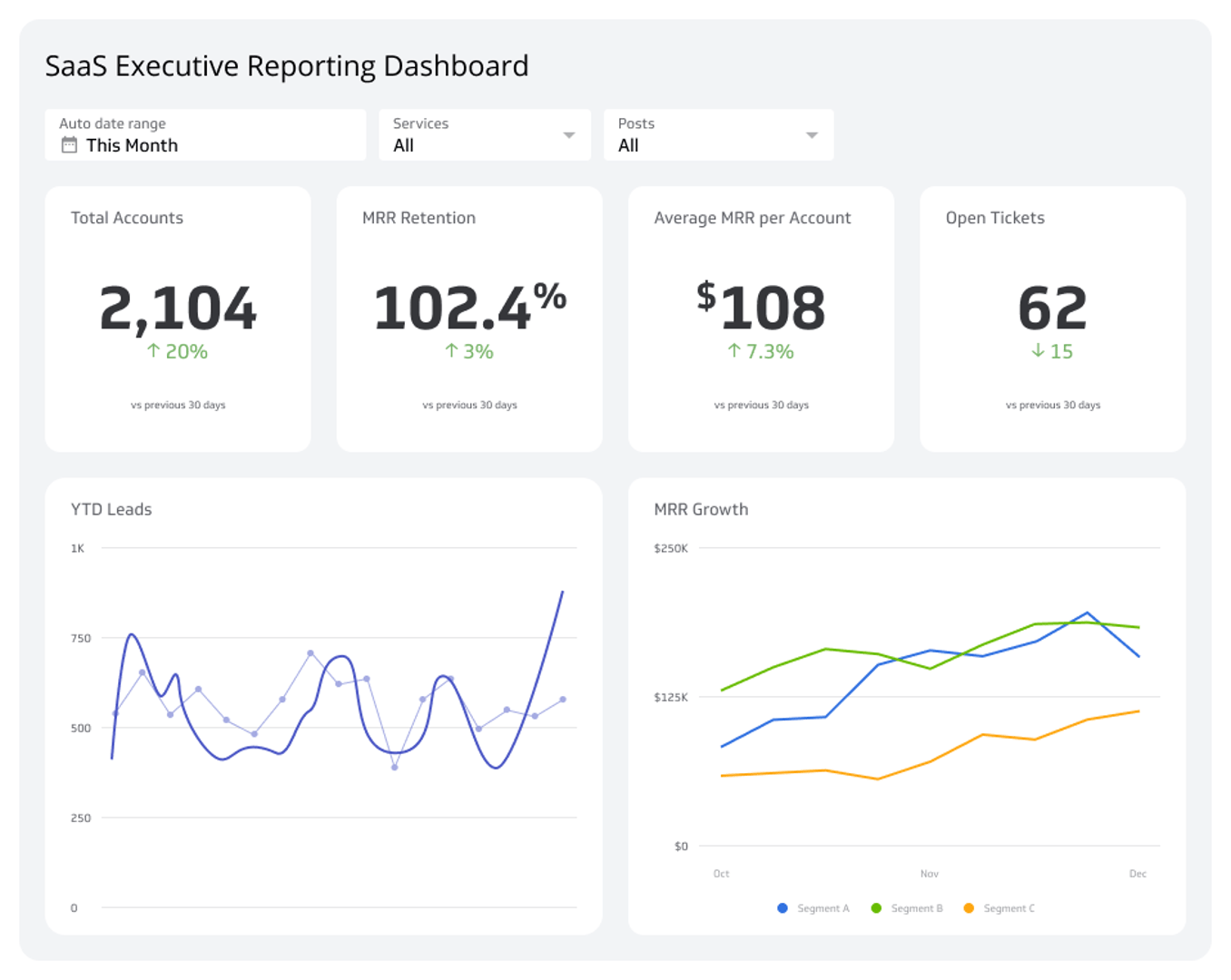SaaS Dashboards
Use dashboards to track SaaS metrics for each team in your business.
What is a SaaS Dashboard?
A SaaS dashboard is a business tool that provides real-time visibility into SaaS applications. It allows businesses to monitor and analyze key data metrics and KPIs (e.g. CAC, MRR, ARPU, CLTV, etc.), providing the information necessary for data-driven decision-making and application optimization.
Why Use SaaS Dashboards?
SaaS (Software as a Service) businesses operate in a fiercely competitive market. A SaaS dashboard organizes key SaaS metrics from sales, marketing, finance, support, and development teams to give executives a bird’s-eye view of the business.
Successful SaaS businesses have one trait in common: they are hyper-aware of their SaaS metrics and KPIs. Metrics – including recurring revenue, lifetime customer value, cost to acquire customers, and net retention – are top of mind for SaaS founders and executives. SaaS Dashboards empower businesses by providing a real-time window into their metrics.
SaaS Dashboard Examples
View all dashboard examplesHow to Use a SaaS Dashboard
Each team in your SaaS business requires a different set of metrics to hit its objectives. The Growth Team is laser-focused on MRR and account growth, while Success monitors customer retention. Use these dashboard examples to see how fast-growing SaaS businesses are reporting on their performance.
Key Components of a SaaS Dashboard
An effective SaaS Dashboard comprises several core components. It focuses on actionable metrics, boasts real-time data updates, and offers customization options to meet the unique needs of every business.
- Actionable Metrics: The dashboard should provide valuable insights into the business's performance, such as user engagement, churn rate, customer acquisition cost, and lifetime value.
- Real-Time Data Updates: SaaS Dashboards should be capable of updating data in real time, ensuring businesses have access to the most recent data for informed decision-making.
- Customization: As every business has unique requirements, an effective SaaS Dashboard allows users to customize it according to their specific needs, focusing on the metrics that matter most to them.
The Power of SaaS Dashboards
SaaS Dashboards are more than just a convenient tool for visualizing data. They act as the brain of a SaaS business, playing a vital role in its growth and success.
- Enhanced Decision Making: Dashboards empower organizations to make well-informed decisions by providing a holistic view of business operations and customer behaviors.
- Improved Customer Experience: They enable businesses to monitor customer activities and identify patterns, leading to the development of customer-centric strategies and enhanced user experiences.
- Increased Productivity: By centralizing data, dashboards reduce the time spent searching for information, improving efficiency and productivity.
- Predictive Analysis: Advanced SaaS Dashboards can analyze trends and patterns to predict future outcomes, enabling proactive decision-making.
Choosing the Right SaaS Dashboard
The choice of a SaaS Dashboard should align with the business's specific needs and goals. It should be user-friendly, scalable, and offer robust security features. Moreover, it should allow for seamless integration with other platforms and systems, ensuring a smooth flow of data and facilitating efficient operations.
SaaS Dashboards are indispensable tools in today's digital-centric business environment. They encapsulate the power of data visualization, providing businesses with the insights necessary to drive growth, enhance customer experience, and streamline operations. By making data accessible and understandable, SaaS Dashboards act as the backbone of data-driven decision-making, ultimately leading to business success.
8 Important SaaS Metrics & KPIs to Include on Your Dashboard
SaaS (Software as a Service) metrics are essential for tracking the performance and growth of a SaaS business. Here is a list of some of the most important SaaS metrics:
- Monthly Recurring Revenue (MRR): The amount of revenue generated from subscriptions each month.
- Annual Recurring Revenue (ARR): The amount of revenue generated from subscriptions each year.
- Churn Rate: The percentage of customers who cancel their subscriptions during a specific time period.
- Customer Acquisition Cost (CAC): The average cost of acquiring a new customer, including marketing and sales expenses.
- Lifetime Value (LTV): The estimated net profit that a customer will generate over the entire duration of their relationship with the company.
- LTV:CAC Ratio: The ratio of Lifetime Value to Customer Acquisition Cost, used to assess the efficiency of a company's customer acquisition efforts.
- Average Revenue per User (ARPU): The average revenue generated per user or customer calculated by dividing total revenue by the number of customers.
- Customer Retention Rate: The percentage of customers retained.

